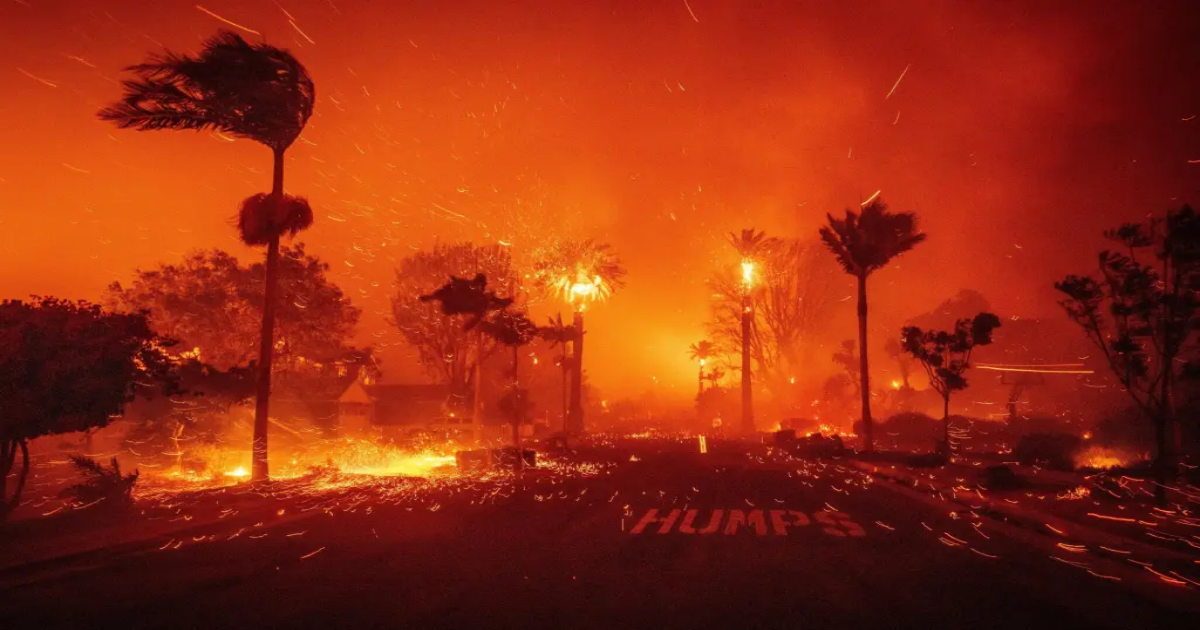Millions of taxpayers who live in Los Angeles County get to skip the April 15 tax deadline.
While almost everyone else in Southern California must file by Tuesday, residents in L.A. County can wait to file their tax returns in the fall because of a disaster declaration issued during the January wildfires that swept Pacific Palisades and Altadena.
California taxpayers affected by those wildfires can file and pay their federal and state taxes as late as Oct. 15 without filing an extension.
The Internal Revenue Service and California Franchise Tax Board each provided guidance on tax relief for individuals and businesses in Los Angeles County affected by the wildfires and windstorms.
“Generally, when you’re talking about postponement of deadlines for disasters, the extension applies to anybody with an address of record in the county,” said Raphael Tulino, an IRS spokesman. “The Oct. 15 deadline is no different from the April 15 deadline.”
For taxpayers worried about paying penalties and interest on their taxes by filing on Oct. 15, Tulino said that the IRS automatically provides “filing and penalty relief to any taxpayer with an IRS address of record located in the disaster area.”
These taxpayers do not need to contact the agency to get this relief, he said.
The latest data available from Los Angeles County shows that nearly 4.7 million returns were filed with the IRS in 2022. The data reflects the number of people who might live in a household filing one return — like a married couple and their children — and not the actual number of residents, Tulino explained.
Households living elsewhere in Southern California are not affected by the postponement and must meet the Tuesday deadline for state and federal tax returns, or they can file an extension.
These include taxpayers in the counties of Orange, which last filed 1.6 million returns in 2022. In Riverside County that was 1.1 million, San Bernardino County was 986,000 and San Diego County 1.6 million.
IRS guidance
The IRS keeps an official list online of all disaster locations that show qualifications for an extension to file — including the L.A. wildfires. There are national and California specific announcements, Tulino said.
The California announcement — which Tulino said covers everything that is needed for taxpayers — lists the various postponed deadlines for individuals and businesses.
For instance, the IRS announcement clarifies that qualified wildfire relief payments made to Los Angeles County taxpayers that are not covered by insurance or other reimbursements are excluded from income, even if these payments are made by nonprofit organizations or other non-governmental entities.
The IRS is permitted to postpone tax-filing and tax payment deadlines because Los Angeles County was declared a disaster area by the Federal Emergency Management Agency, the government agency that helps communities recover from disasters such as the L.A. wildfires.
The Oct. 15 deadline applies to individual income tax returns and payments normally due April 15, 2025. This relief also applies to the 2024 estimated tax payment due on Jan. 15, and estimated tax payments due on April 15, June 16 and Sept. 15.
California tax guidance
The state’s Franchise Tax Board provided similar advice to taxpayers.
For those who qualify for the Los Angeles County fire relief, the postponement to file and pay means interest and penalties would not accrue until after Oct. 15, according to FTB spokesman Andrew LePage.
He referred taxpayers to a list of frequently asked questions for residents and businesses affected by the wildfires.
The list covers such topics as who is eligible, whether tax returns and payments of a trust or estate in a covered disaster area for the 2024 tax year be considered timely if made by Oct. 15, and whether installment agreement payments are suspended through the postponed deadline.
The state provides subtle differences to the IRS’ guidance.
For instance, taxpayers do not need to provide supporting documentation to prove that their principal residence or place of business is in Los Angeles County.
However, taxpayers should write the name of the disaster (for example, Los Angeles fire) in blue or black ink at the top of their return to alert the FTB.
If taxpayers are filing electronically, they should follow their software instructions to enter disaster information, according to the FTB. Taxpayers also are assigned a “disaster code” — which is 157, for Los Angeles County’s January fires — when filing.
For further information, taxpayers should refer to the FTB fire pages for Los Angeles County, according to LePage.
Originally Published: April 14, 2025 at 12:02 PM PDT



